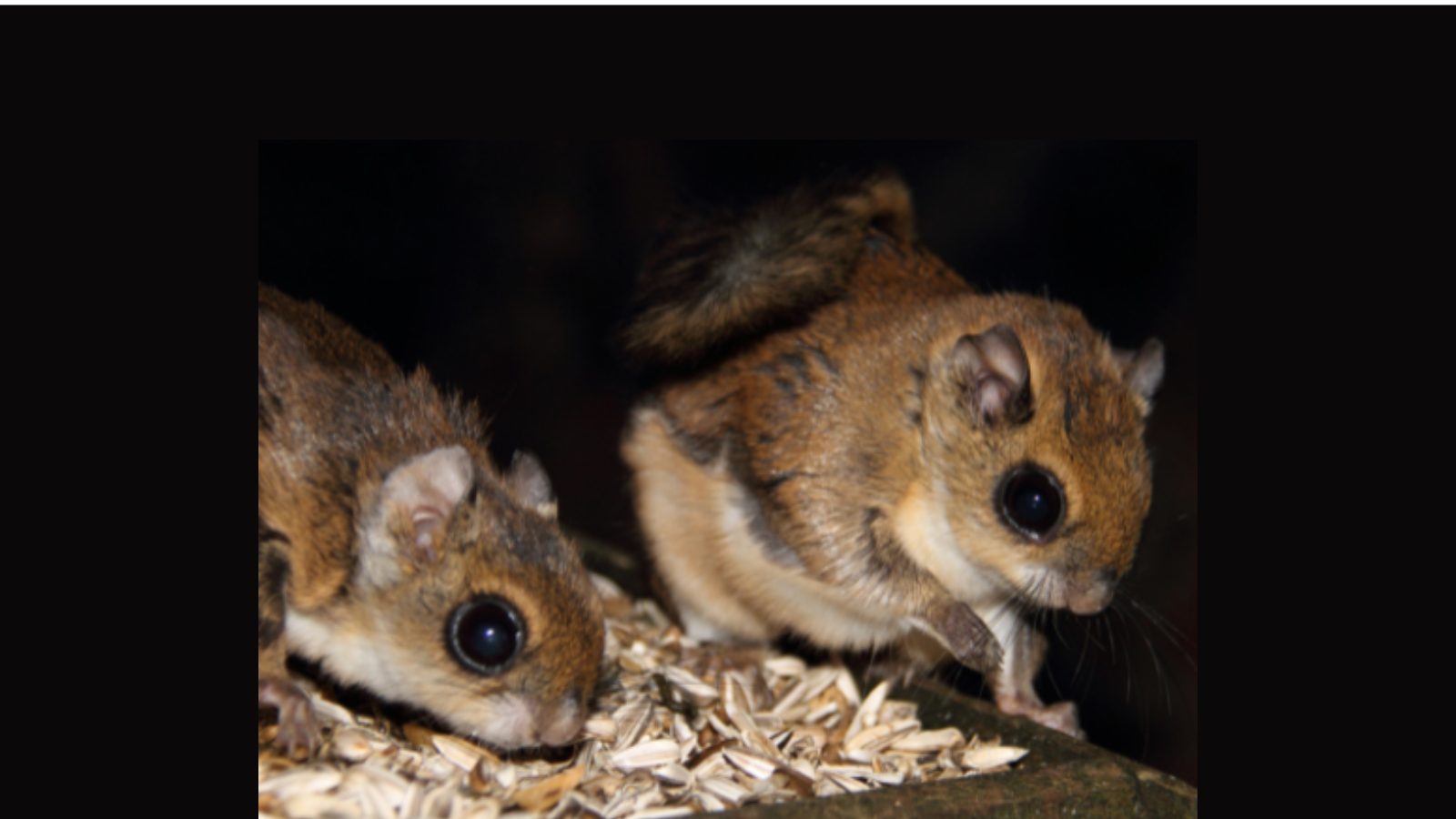
Flying Squirrels
Flying Squirrels in North Carolina
Overview:
Two species in NC: Northern (Glaucomys sabrinus) and Southern (Glaucomys volans) flying squirrels
Not true fliers, but glide using a furry membrane between their front and back legs
Nocturnal animals, rarely seen by humans
Habitat and Behavior:
Prefer mature forests with abundant tree cavities
Active year-round, primarily at night
Highly social, often nesting in groups
Can glide up to 150 feet, using their tail as a rudder
Life Cycle:
Breeding occurs twice a year: late winter and late summer
Gestation period: about 40 days
Litter size: 2-7 young
Young are independent at about 3 months old
Diet:
Omnivorous: nuts, seeds, fruits, insects, and occasionally bird eggs or nestlings
Often feed on tree buds and fungi
Unique Characteristics:
Large eyes adapted for night vision
Soft, dense fur that aids in silent gliding
Can rotate their ankles 180 degrees to grasp tree trunks when landing
Human Interactions:
Common Occurrences:
Nesting in attics or wall voids of homes
Nocturnal noises in homes, especially scratching or scurrying sounds
Uncommon Occurrences:
Damage to home insulation or wiring
Droppings accumulation in living spaces
Resolution Methods:
DIY Solutions:
Seal entry points to homes (gaps as small as 1-2 inches)
Trim tree branches away from rooflines
Use bright lights or noise makers in attics to deter squirrels
Professional Wildlife Control:
Humane trapping and relocation
Thorough home inspection to identify all entry points
Installation of one-way exclusion devices
Advanced Management:
For persistent flying squirrel issues, consider a comprehensive approach. Install metal flashing around potential entry points, as flying squirrels can chew through wood and some softer materials. If you enjoy the presence of flying squirrels but want to keep them out of your home, install nesting boxes in nearby trees to provide alternative shelter after removing the flying squirrels from your property. Regular roof and exterior home maintenance is crucial to prevent new entry points from forming. If you suspect a flying squirrel infestation, act quickly, as these animals can reproduce rapidly and establish large colonies in attics. Always prioritize humane removal methods, as flying squirrels play an important role in forest ecosystems. If you live in an area with frequent flying squirrel activity, educate yourself about their behavior and needs to foster a better coexistence with these fascinating nocturnal gliders. Contact a professional wildlife removal service to ensure both your safety and the humane treatment of flying squirrels during a removal or exclusion process.

